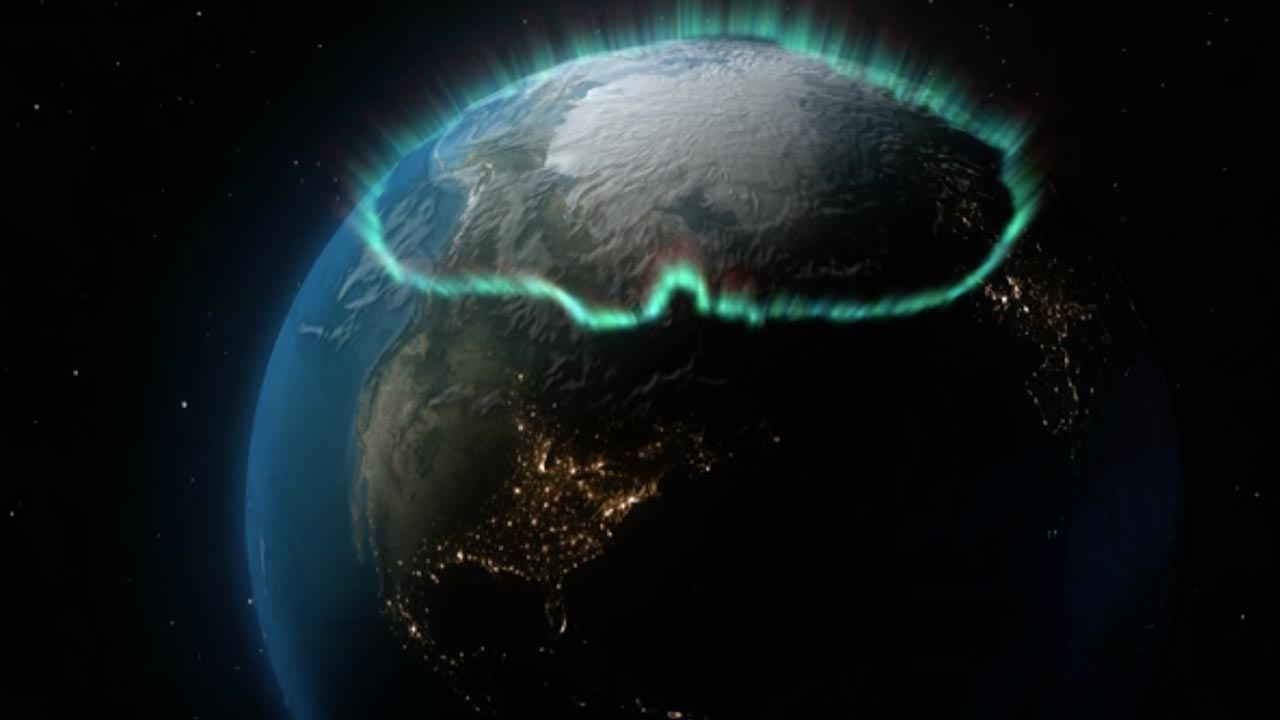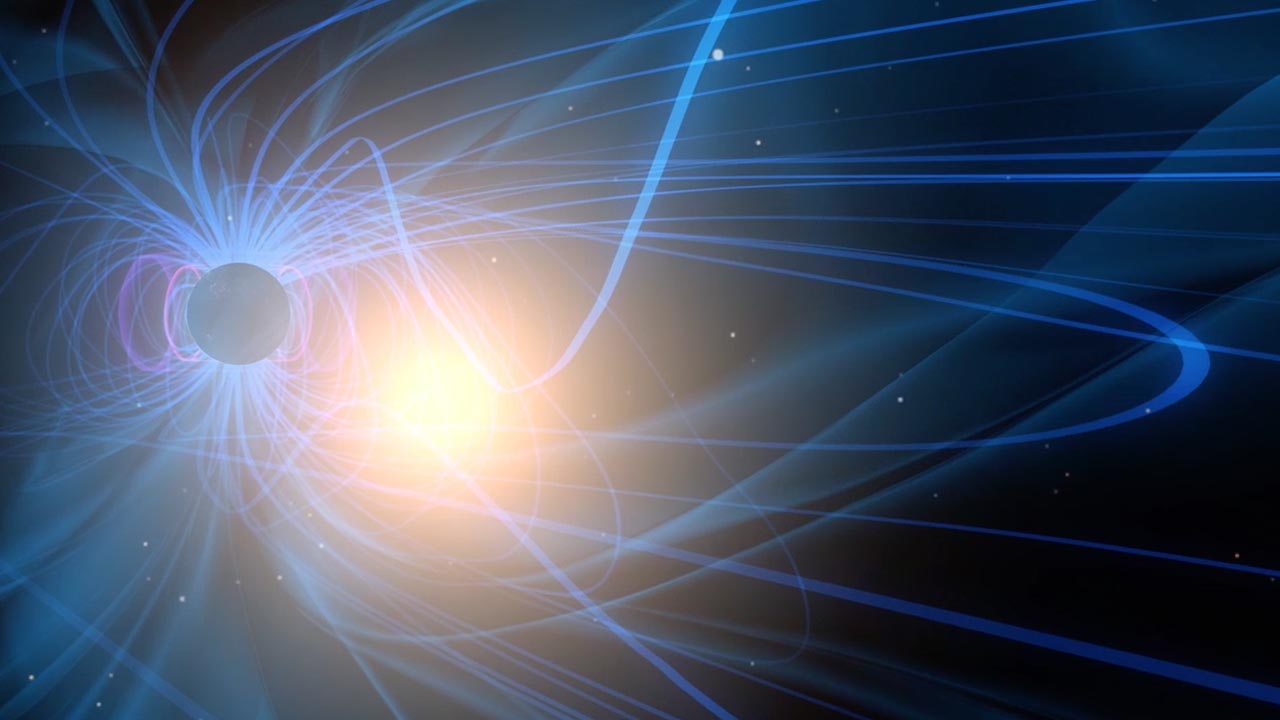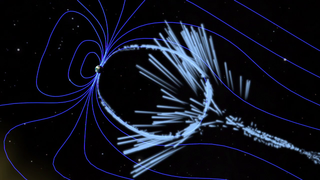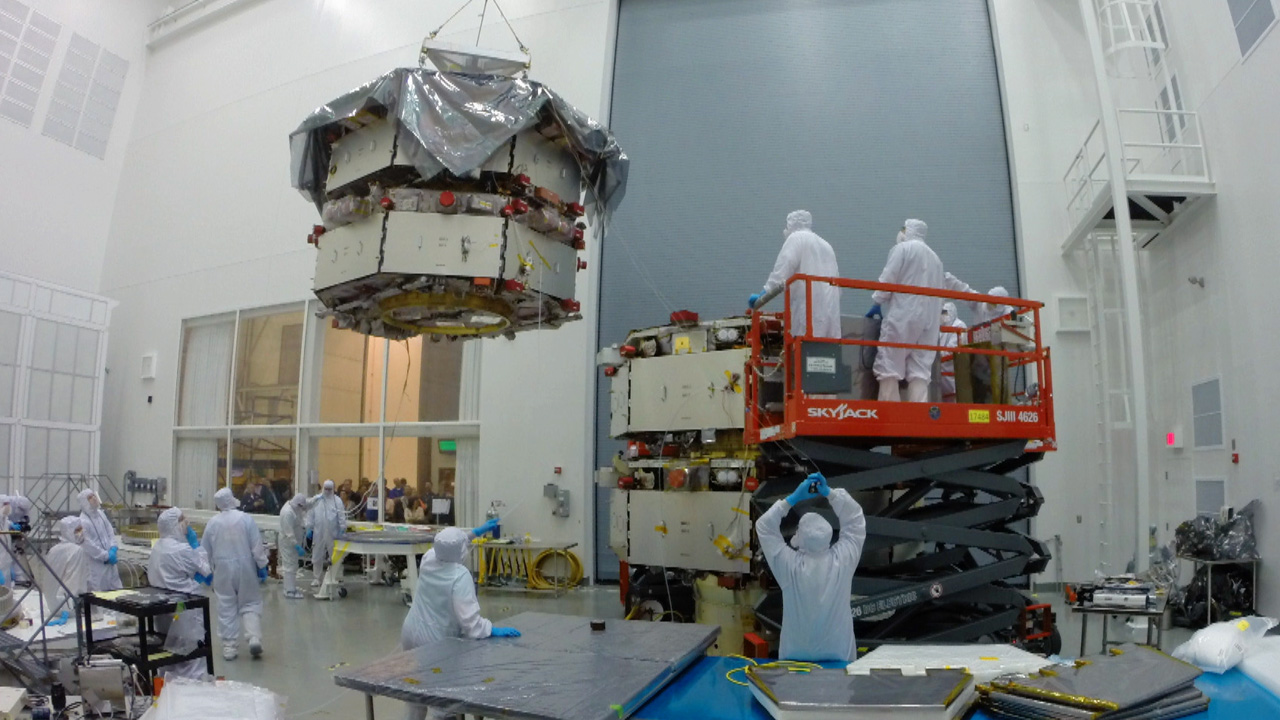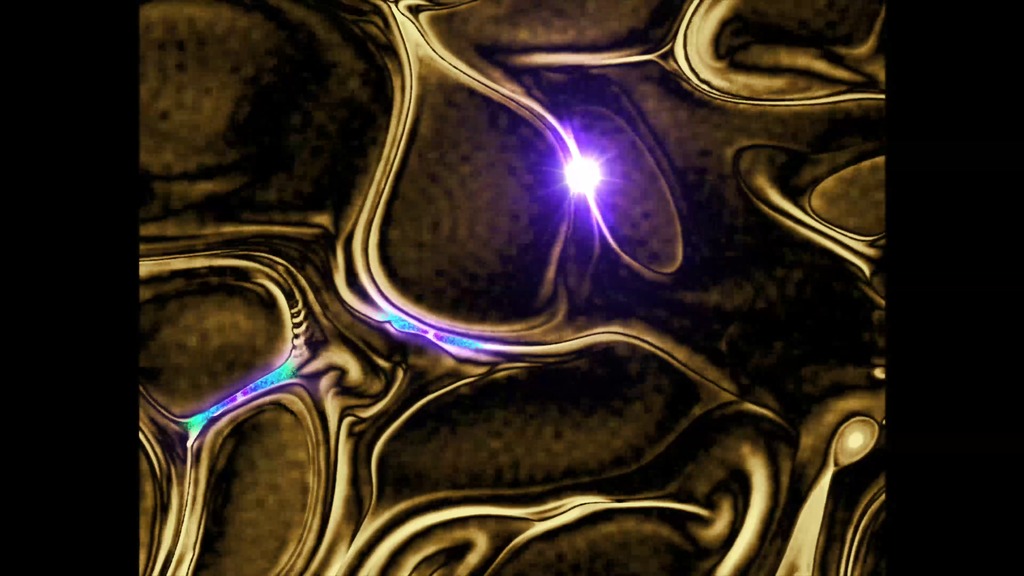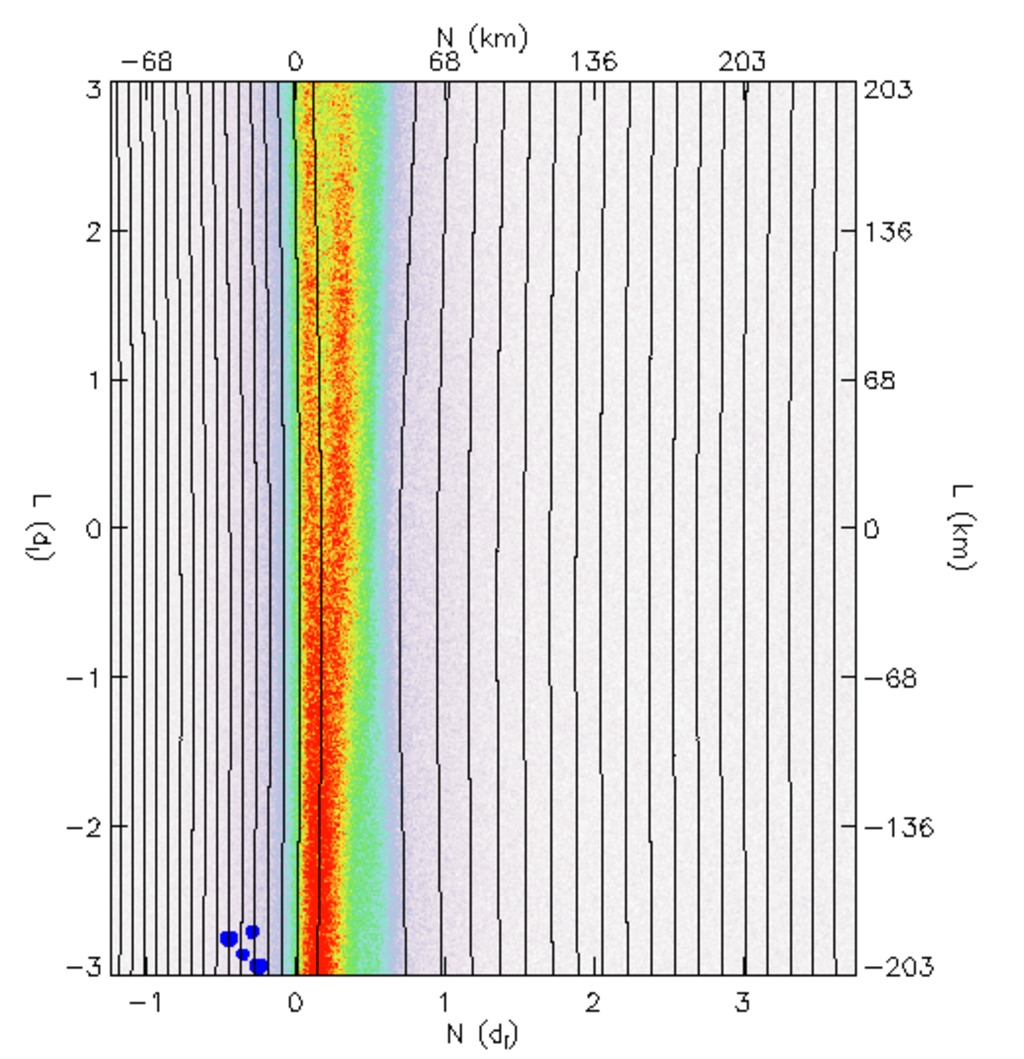MMS Spacecraft Animation
The Magnetospheric Multiscale (MMS) mission is a Solar Terrestrial Probes mission comprising four identically instrumented spacecraft that will use Earth’s magnetosphere as a laboratory to study the microphysics of three fundamental plasma processes: magnetic reconnection, energetic particle acceleration, and turbulence. These processes occur in all astrophysical plasma systems but can be studied in situ only in our solar system and most efficiently only in Earth’s magnetosphere, where they control the dynamics of the geospace environment and play an important role in the processes known as “space weather.”
Learn more about MMS at www.nasa.gov/mms
MMS beauty pass showing 4 observatories on the dayside.
Beauty pass showing the MMS spacecraft flying on the nightside.
Credits
Please give credit for this item to:
NASA's Goddard Space Flight Center Conceptual Image Lab
-
Animator
- Walt Feimer (HTSI)
-
Producer
- Genna Duberstein (USRA)
-
Project support
- Aaron E. Lepsch (ADNET Systems, Inc.)
Release date
This page was originally published on Friday, March 14, 2014.
This page was last updated on Tuesday, November 14, 2023 at 12:21 AM EST.

